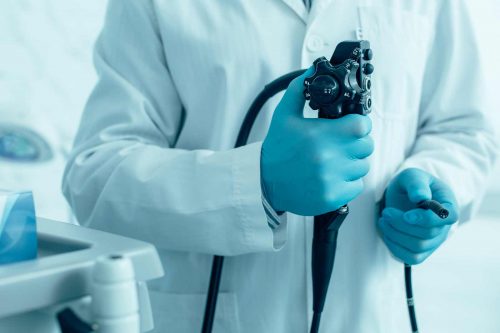MRI arthrography
Sometimes, in order to obtain a better picture of the inside parts of the joint, the doctor will refer the patient for MRI arthrography of the joint. The main difference between a regular MRI and MRI arthrography is in the preparation, during which a contrast agent, which improves the quality of imaging and provides the doctor with a better picture of the condition of the joint. The examination demonstrates fine ruptures in joint cartilage and tendons, and of course, fractures, large tears, inflammations, fluid buildup, tumors, cysts, etc. This is an examination that is suitable for diagnosing pathological processes in the hip, shoulder, ankle joints and more. Sometimes, the doctor refers to this examination to assess the thickness and structure of the joint’s cartilage rim, called labrum, which is essential for the proper functioning of the joint.
Reasons for referral for an MRI arthrography of the joint
- Tears in the joint
- Pain from an unknown source in the joint area
- Degenerative changes in the joint
- Tears and structural defects in the labrum
- Injuries and damage to the joint cartilage
- Damage or fracture of the joint
- Suspected tumor in the joint area
- Suspected infection of the joint
Course of the examination
The examination consists of two stages: arthrography and MRI. In the first stage, during arthrography, a contrast agent containing iodine and a contrast agent for MRI called gadolinium is injected into the joint. The injection is performed under local anesthesia with X-ray guidance. The fluid that is injected into the body is absorbed within a day and may cause mild pain for the first few hours after the examination, which does not interfere with daily activities. Since the injection involves exposure to a minimal amount of radiation, this examination is not recommended for pregnant women. In addition, of course, the examination cannot be performed if there is sensitivity to iodine.
After injection of the agent, the patient waits for about 60 minutes and moves to an MRI device, where the examination is performed. The scan itself takes about 15-30 minutes, during which the patient must lie motionless on a special bed that moves within the examination device. The examination does not cause any pain, but the need to lie motionless on a narrow bed inside a closed device may cause a feeling of discomfort. Device noise during the examination can be overcome using earplugs or earbuds, but if the patient is suffering from claustrophobia, it is important to inform the doctor and review options to cope with the problem.
The patient may commence their daily routine immediately after the examination, but it is advised to avoid physical activity on the day of the examination, especially operating the examined joint.
Importance of the examination
MRI arthrography is the best examination for identifying a variety of pathological processes within the joint, locating the source of joint pain and identifying small tears that are not visible in other imaging examinations. Usually, this referral means that the patient is suffering from severe joint pain, movement restriction and significant function impairment. Modern medicine has a wide range of treatment options for various joint damage that enable the patient to return to active life and forget about the pain. But, in order for the doctor to be able to adapt the treatment to the patient and put him out of his misery, he must have a complete picture of the joint condition. Every day of waiting for an examination causes the patient unjustified suffering and keeps treatment away. Are you suffering from joint pain? Did your doctor refer you to MRI arthrography to help you get the treatment that will bring you back to life without pain?
Do not suffer in vain!
Contact Medical Assistance today and perform the examination in the next 24-72 hours!





